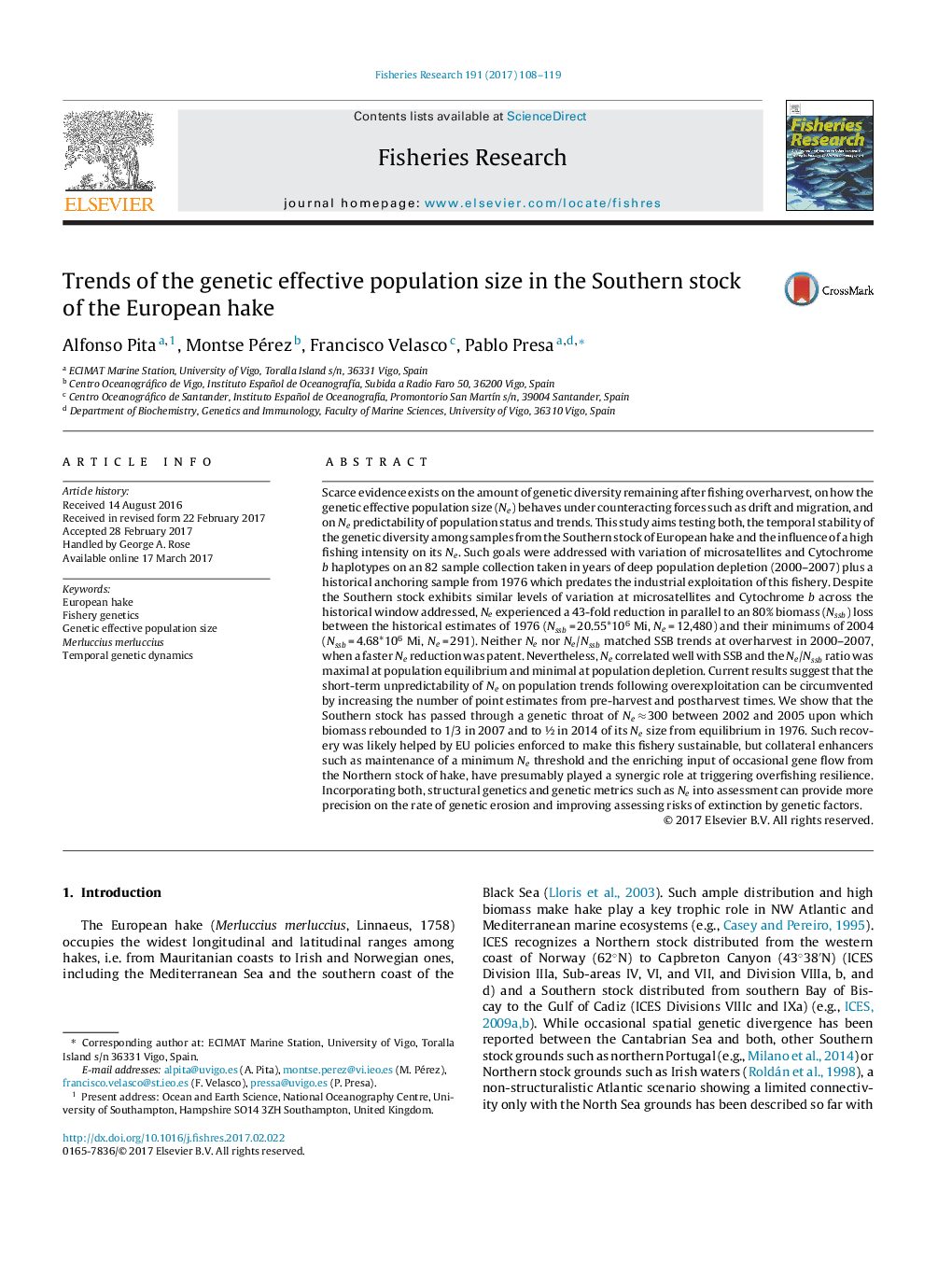| کد مقاله | کد نشریه | سال انتشار | مقاله انگلیسی | نسخه تمام متن |
|---|---|---|---|---|
| 5765622 | 1626779 | 2017 | 12 صفحه PDF | دانلود رایگان |
- Overharvest led to a 43-fold Ne reduction and 80% SSB loss from equilibrium.
- Truncation of equilibrium distribution increased reproductive variance at overharvest.
- Reduction of Ne lagged behind SSB so Ne/Nssb reached minimum at overharvest.
- An Ne minimum does not mirror Ne erosion but sampling bias on sweepstake scenarios.
- A good correlation was seen between Ne and historical estimates of SSB.
Scarce evidence exists on the amount of genetic diversity remaining after fishing overharvest, on how the genetic effective population size (Ne) behaves under counteracting forces such as drift and migration, and on Ne predictability of population status and trends. This study aims testing both, the temporal stability of the genetic diversity among samples from the Southern stock of European hake and the influence of a high fishing intensity on its Ne. Such goals were addressed with variation of microsatellites and Cytochrome b haplotypes on an 82 sample collection taken in years of deep population depletion (2000-2007) plus a historical anchoring sample from 1976 which predates the industrial exploitation of this fishery. Despite the Southern stock exhibits similar levels of variation at microsatellites and Cytochrome b across the historical window addressed, Ne experienced a 43-fold reduction in parallel to an 80% biomass (Nssb) loss between the historical estimates of 1976 (Nssb = 20.55*106 Mi, Ne = 12,480) and their minimums of 2004 (Nssb = 4.68*106 Mi, Ne = 291). Neither Ne nor Ne/Nssb matched SSB trends at overharvest in 2000-2007, when a faster Ne reduction was patent. Nevertheless, Ne correlated well with SSB and the Ne/Nssb ratio was maximal at population equilibrium and minimal at population depletion. Current results suggest that the short-term unpredictability of Ne on population trends following overexploitation can be circumvented by increasing the number of point estimates from pre-harvest and postharvest times. We show that the Southern stock has passed through a genetic throat of Ne â 300 between 2002 and 2005 upon which biomass rebounded to 1/3 in 2007 and to ½ in 2014 of its Ne size from equilibrium in 1976. Such recovery was likely helped by EU policies enforced to make this fishery sustainable, but collateral enhancers such as maintenance of a minimum Ne threshold and the enriching input of occasional gene flow from the Northern stock of hake, have presumably played a synergic role at triggering overfishing resilience. Incorporating both, structural genetics and genetic metrics such as Ne into assessment can provide more precision on the rate of genetic erosion and improving assessing risks of extinction by genetic factors.
Journal: Fisheries Research - Volume 191, July 2017, Pages 108-119
